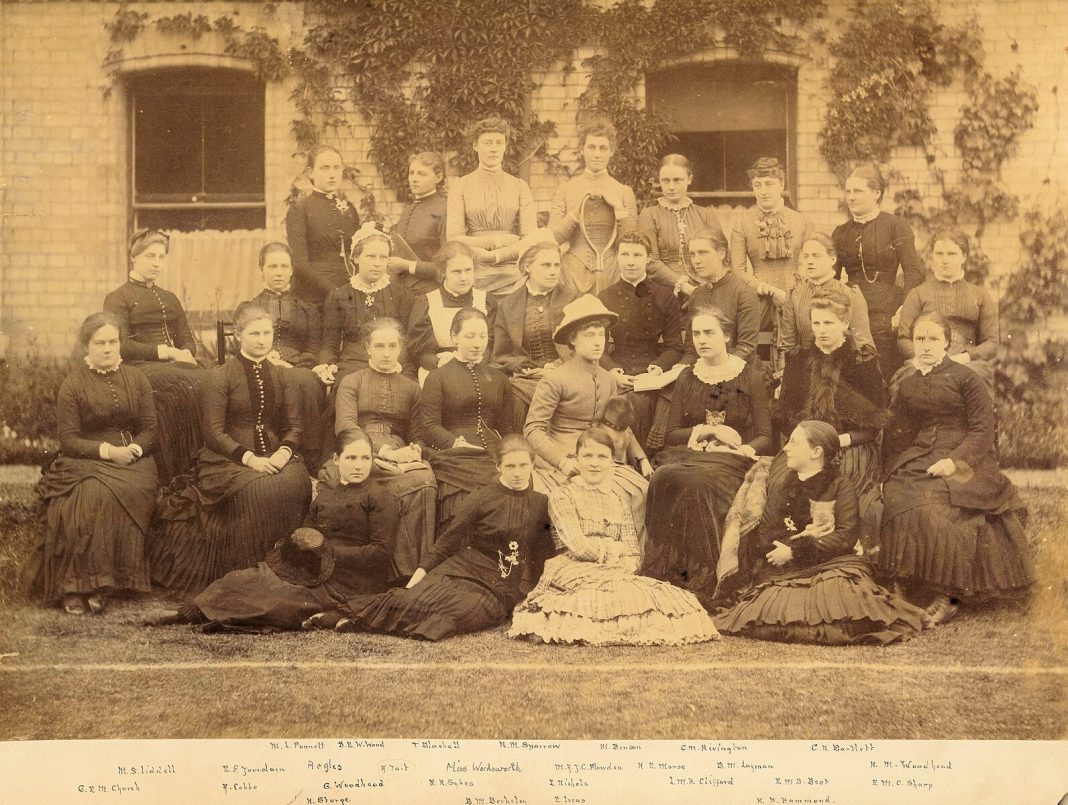Do not worry: despite the title, this is not a rowing novel.
Instead, the term ‘The Eights’ in Miller’s novel refers to the four women who populate corridor eight in St. Hugh’s College – in 1920, making them four of the first women to ever matriculate at the University of Oxford. The novel follows their first year, a year that, for Oxford students reading, will modulate between the overwhelmingly familiar and the shockingly unique. The students – bright, troubled Marianne; rebellious Otto; beautiful, grieving Dora; and fervently political Beatrice – bond over excessive reading lists, attend union debates, and panic over formal attire, all evergreen Oxford experiences. At the same time, owing to their historical context, they deal with ridiculous chaperone rules, confront tutors who refuse to teach them, and obey strict curfews that cause unceremonious theatre-night exits.
It is Miller’s interweaving of the quintessentially Oxonian with this drastic historical moment that lends the novel such charm and interest. And it is, indeed, intensely Oxford, to an extent that surpasses Evelyn Waugh’s Brideshead Revisited or Emerald Fennell’s Saltburn. Joanna Miller, herself an Oxford alumna, of Exeter College, has no shame in steeping the novel in Oxford’s unique atmosphere. It does not have Parts I, II, and III, instead sectioning the novel out into Michaelmas, Hilary, and Trinity; chapters follow weeks, from 0th to 8th. Throughout, timeless Oxford sentiments are shared by the reader in the know – the excitement that a scholar’s gown comes “with sleeves”, for example, or the yawning question, “Is this it?” upon straining to hear May Day choristers.
Yet this is a historical novel, and the four main characters also must tackle the fervent misogyny that faced the first female matriculands, the shadow of World War I, and bouts of the Spanish Flu. The novel’s shining moments come in its attention to the historical conditions that inspire it: as an addended author’s note makes clear, Miller’s research for the novel was far-reaching and rigorous. Rules and notes “taken from real documents in the St Hugh’s archives” populate the text alongside sometimes factual, sometimes fictional articles from the Daily Mail, The Oxford Chronicle, and The Imp. The environment of the novel, furnished by this fascinating historical material, is thus expertly wrought.
If there is to be criticism of Miller’s work, it should fall on its plotlessness – the main draw of the novel is the climate it creates, lacking in real action or purpose. It is quiet, meandering: Personally, I found this pleasant, a reading experience that feels like a stroll round Christchurch Meadows. Undoubtedly, for others, this will be frustrating. Where there is plot, though, it is often underbaked and unbelievable. Perhaps the main drive of the novel is what the blurb calls Marianne’s “secret she must hide from everyone”, but Miller seemed to forget to hide it from the reader – clues are so clumsily dropped that it is clear what secret she is keeping by 5th week of Michaelmas. The novel’s ending, and resolutions, tend too close towards fable and fairy-tale: It would’ve been a bolder and better choice, to properly deal with what would have been painful, unhappy consequences of the discovery of an alive-but-thought-dead husband, the reveal of a child-caring widower, and unrequited lesbian desire. Instead, while the choice to only cover one year cleverly leaves the novel open for a sequel (or two, because readers will want to see the Eights deal with Finals and graduation), all the conflict of the text is too cleanly resolved. Any development in this narrative from Miller will have to depart radically from what she has left herself with.
These shortcomings, though, should not take away from what is definitely a successful creation and an exciting, important debut novel. What we can learn from this semi-imagined Oxford of 100 years ago is clear. When Marianne reflects that “misogyny is like the mice under the floorboards […] scuttling about unseen, but never far away”, it risks sounding inauthentic, a 21st century voice, but it is nevertheless pertinent. While, fortunately, Oxford has come a long way in its treatment of women, the novel makes plain, in some of the University’s antiquated rules and antique fellows, that much is still to be done. Being made “on occasion […] to feel like unwelcome house guests” will be a feeling that is undoubtedly, unfortunately familiar for far too many students today. Miller is still able to combine an important message with an atmosphere that, for the freshers excited for their first trinity, for finalists not ready to leave, or for nostalgic alumni, will be gloriously, unapologetically, indulgently Oxford.
The Eights was published in March 2025, and is now available at bookstores.


